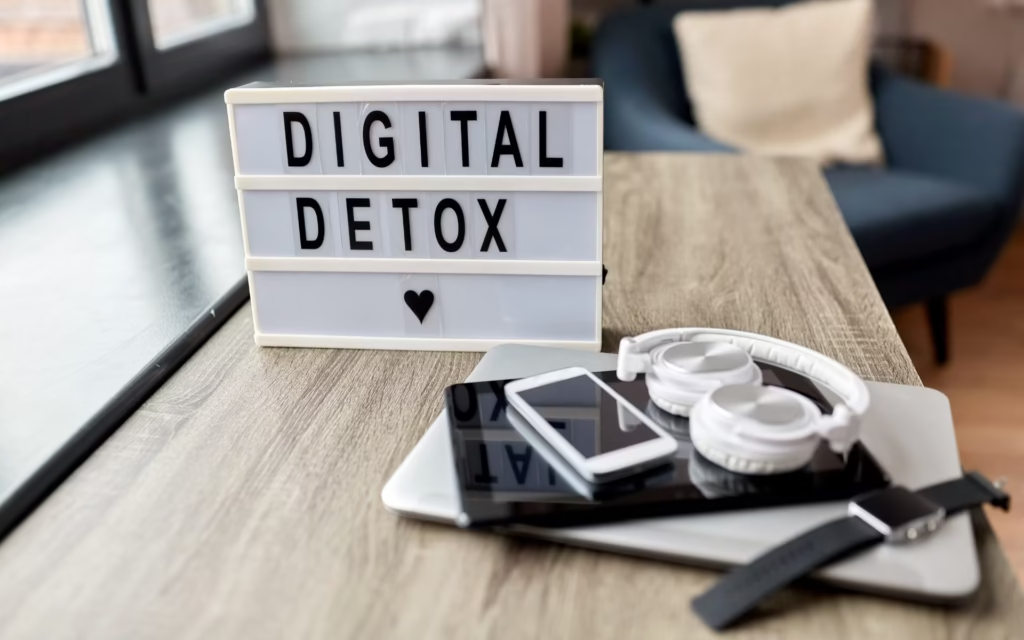In today’s hyper-connected world, digital detox and mindfulness have become essential lifestyle practices for improving mental wellness. As we enter 2025, the rapid pace of technology and the constant presence of digital devices have increased stress, anxiety, and burnout for many people across Tier 1 countries like the United States, the UK, Canada, and Australia. This blog explores the rising trend of digital detoxing combined with mindfulness, highlighting how this lifestyle shift is reshaping mental health and overall well-being in 2025.
Understanding the Need for Digital Detox in 2025
The digital revolution has transformed how we live, work, and socialize, but it has also brought a darker side: digital overload. Excessive screen time, social media addiction, and constant notifications create mental fatigue and reduce productivity. This has led to a growing movement towards digital detoxing — consciously unplugging from electronic devices to reset the mind and body.
Digital detox practices can range from short daily breaks to extended “tech-free” days or even retreats focused on disconnecting from technology altogether. These practices help reduce digital anxiety, improve sleep quality, and restore focus.
The Role of Mindfulness in Enhancing Mental Wellness
Mindfulness—the practice of being fully present in the moment—has gained massive popularity as a powerful tool for managing stress and boosting mental health. In 2025, mindfulness goes hand in hand with digital detox efforts to create a balanced, healthier lifestyle.
Through mindfulness techniques such as meditation, deep breathing, and body scans, individuals cultivate awareness and emotional regulation. This reduces feelings of overwhelm caused by digital distractions and helps build resilience against stressors.
How Digital Detox and Mindfulness Complement Each Other
- Breaking the Cycle of Digital Dependence: Mindfulness helps people recognize compulsive phone-checking habits, allowing for intentional digital use.
- Improved Focus and Productivity: Detoxing from screens combined with mindful breathing exercises enhances concentration and creativity.
- Emotional Balance: Mindfulness reduces anxiety and depression linked to social media and information overload.
- Better Sleep Patterns: Reducing blue light exposure and practicing calming mindfulness rituals improves sleep quality.

Practical Digital Detox Strategies for 2025
Adopting digital detox habits doesn’t require drastic changes. Here are effective strategies you can implement today:
1. Schedule Screen-Free Times
Set specific periods each day to disconnect from all devices. Morning routines without phones or evening wind-down hours can significantly reduce stress.
2. Create Tech-Free Zones
Designate areas in your home, such as the dining room or bedroom, as no-device zones to encourage face-to-face interaction and restful environments.
3. Use Technology to Manage Technology
Leverage apps that limit screen time or block distracting notifications. Popular tools like Forest, Focus@Will, and Freedom help maintain digital discipline.
4. Practice Mindful Device Use
Before unlocking your phone or opening an app, pause and ask if the action aligns with your goals or needs. This builds intentionality and breaks habitual scrolling.
Mindfulness Techniques to Support Digital Detox
Integrating mindfulness into your routine enhances the benefits of detox:
- Guided Meditation: Use apps like Headspace or Calm to practice meditation sessions focusing on breath and awareness.
- Breathing Exercises: Simple techniques such as box breathing can quickly reduce stress and bring focus.
- Body Scans: Paying attention to physical sensations anchors you in the present and helps detach from digital distractions.
- Journaling: Reflecting on your emotions and experiences daily supports emotional clarity and reduces anxiety.
Mental Wellness Benefits in Tier 1 Countries
In countries with high digital adoption, such as the US, UK, Canada, and Australia, the combination of digital detox and mindfulness is gaining traction as a mainstream wellness approach. Research shows that:
- Reduced screen time correlates with lower rates of anxiety and depression.
- Mindfulness improves emotional regulation and reduces symptoms of burnout.
- Companies are adopting digital wellness policies to improve employee mental health.
This lifestyle shift is reflected in rising search volumes for terms like digital detox benefits, mindfulness meditation, reduce screen time, and mental wellness strategies in Tier 1 countries, underscoring growing awareness.
Overcoming Challenges of Digital Detox in 2025
While digital detox has clear benefits, it comes with challenges:
- Fear of Missing Out (FOMO): Many struggle to disconnect due to social pressures.
- Work Demands: Remote and hybrid work setups often require constant digital connectivity.
- Habits and Addiction: Breaking deep-seated digital habits takes patience and support.
To overcome these, start small and build gradual habits. Enlist friends or family for accountability, and set clear boundaries between work and personal digital use.
The combined power of digital detox and mindfulness is shaping a significant lifestyle shift in 2025. As digital distractions continue to escalate, prioritizing mental wellness through intentional disconnection and present-moment awareness becomes vital.
Whether you’re seeking to reduce anxiety, improve sleep, or boost productivity, integrating digital detox practices with mindfulness offers a sustainable path to a healthier, balanced life. Start with small changes, stay consistent, and watch how your mental wellness flourishes in this new digital age.

